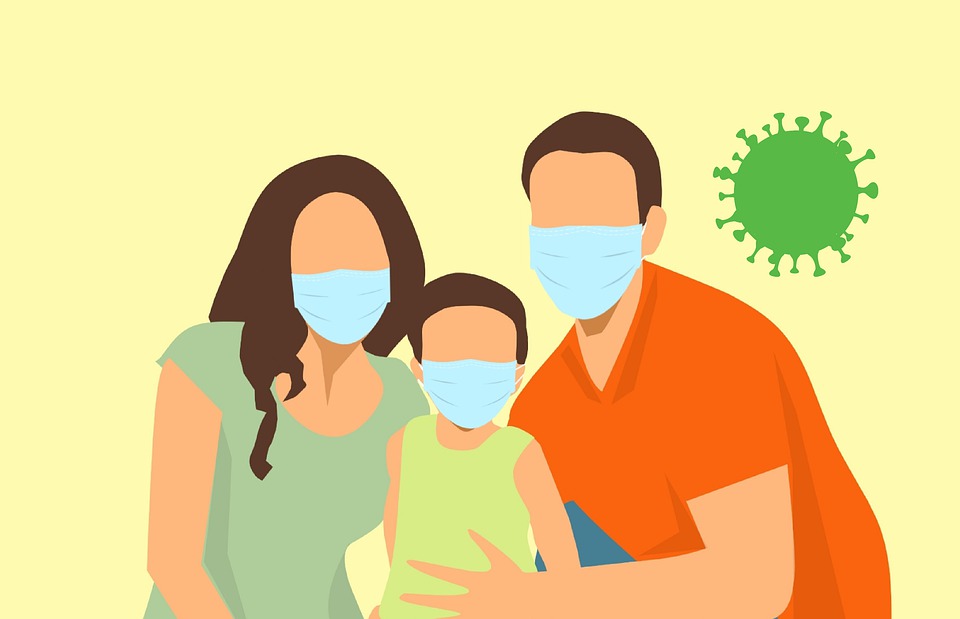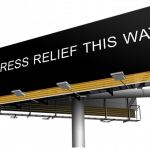Most people who get COVID-19 experience mild symptoms that go away within a week. But even with mild symptoms, it’s hard to feel your best. The good news is that there are at-home treatments that can help you feel better, sooner.
It’s also important to know when to get medical treatment to make sure that your mild symptoms don’t turn into severe illness. Read on to learn about mild COVID-19, the best ways to treat your symptoms, supplies that’ll help, and when to talk to your doctor.
Mild Symptoms vs. Moderate Or Severe Symptoms
If your only COVID-19 symptoms are a runny nose, sore throat and a headache, does that mean you have a mild case of COVID-19? If you have a high fever and body aches, will it end up being more serious?
The truth is that during the early stages of COVID-19, it can be hard to tell if your symptoms will be mild or more severe. That’s because almost all COVID-19 symptoms can be present in a mild case of COVID-19.
The only COVID-19 symptoms that are not generally seen in people with mild cases are labored breathing and shortness of breath. If you notice these symptoms, you should make an appointment with your doctor.
Otherwise, the main differences between mild, moderate and severe COVID-19 tend to be:
- The intensity of the symptoms
- How many symptoms you have
- How long the symptoms last
If you’re vaccinated, you can still get COVID-19. If you are unvaccinated you can get COVID. You can still get COVID even if you have already had COVID. There does seem to be some natural immunity protection but there is no data to say how long that lasts, at this time.
Most people infected with COVID have a mild case that can be cured with rest and over the counter pain medicines.
If children get COVID-19, they are more likely to have mild COVID-19 symptoms – whether or not they are vaccinated.
Everyone is different, so it’s hard to give an exact timeframe. But mild COVID-19 symptoms often go away in five days. If your symptoms last for more than two weeks, contact your doctor – especially if your symptoms are getting worse instead of better.
How to Isolate at Home
The Centers for Disease Control and Prevention (CDC) advises that people with a mild case of COVID-19 isolate for 10 days after their symptoms start. That means staying home except to get medical care.
According to the CDC, you can end isolation after 10 days if you’ve been fever-free for 24 hours without help from fever-reducing medications and your condition has improved. If you’ve had severe symptoms or are immunocompromised, you might have to isolate longer.
When you’re in self-isolation, you won’t be able to leave the house. So, it’s good to have some essentials on hand. Of course, if you’re in a pinch, there are ways to get groceries, household goods and even prescriptions delivered to your door through the help of relatives, friends or a delivery service.
What to Do If You Live with Other People
It’s much easier to keep yourself distanced from others if you live alone, but that might not be the case. If you have to be in the same room as someone else in your home, you can reduce the risk of spreading the virus to them by both wearing face masks, staying socially distanced, and opening a window.
If there are other people in your household, you’ll need to take some steps to avoid transmitting the virus to them while you work on getting better.
- Isolate yourself in your own room and use your own bathroom, if possible.
- Have other members of your household leave food, drinks, and other needs at your door rather than going to the kitchen or shared living spaces.
- Consider using disposable dishes, bowls, and flatware.
- Communicate via text or phone. If you’re up for it, you could video chat with FaceTime or Google Hangouts.
- Regularly disinfect surfaces, handles, knobs, and anything else that could potentially be touched in a shared room, such as a bathroom or kitchen (though, again, avoiding communal areas is ideal).
- Wash your hands well with soap and water, and have everyone else in your home do so, too.
Soothing the Symptoms of COVID-19
If you have mild COVID-19, it’s likely that your sickness will go away on its own. But that doesn’t mean you have to feel completely miserable. Here are some ways you can ease your symptoms, heal and get better sooner.
1. Get Plenty Of Sleep
If you have COVID-19, getting enough sleep is necessary to help your body fight off the infection. If you’re having a hard time falling asleep, ask your doctor if a melatonin supplement could help.
If your symptoms are keeping you awake, use pillows to elevate your head since it’s harder to breathe when you’re flat on your back, especially if you’re congested.
2. Drink Fluids To Avoid COVID-19 Dehydration
When you’re sick, your body can lose lots of fluids, especially if you have a high fever, diarrhea or have been vomiting. It’s important to replace those fluids – the best way to do this is by drinking lots of water. Tap water is generally fine but if the sink you’d use for water is shared by others, you may want to use bottled water so that you don’t get your germs on the faucet while getting water.
Chances are you’ll be better within five days but it’s best to have a two-week supply of bottled water on hand. If you have bad diarrhea, a sports drink like Gatorade can replace electrolytes – essential minerals like sodium, calcium and potassium. Electrolytes help your cells absorb and use the fluids you’re drinking.
Another thing to consider is a cup of green tea. Studies on green tea and COVID-19 have found the beverage contains a compound that may work against the coronavirus. The bonus is that warm tea feels great on a sore throat.
3. Keep Eating
The idea of digging into a plate of food isn’t always appetizing when you’re sick. And if you lose your sense of smell and taste when you have COVID-19, you may find that eating even your favorite foods is no longer enjoyable. But food is an important part of recovery. By eating, you give your body nourishment to heal itself.
While it’s easy to look for comfort in junk food when you’re feeling under the weather, healthier options can give you energy and possibly help you heal faster. Some great choices include bananas, oatmeal, yogurt, salmon and leafy green vegetables.
If you can’t stomach anything big, try drinking a little bit of warm broth every few hours. That way your body will get some nourishment. Plus, the broth will help you stay hydrated.
4. Do Breathing Exercises for COVID-19
Exercising your lungs can help if you have mild COVID-19, but stop if they leave you short of breath. If you’re still struggling to breathe after resting, call 911.
Here are breathing exercises you can try:
Pursed lip breathing
This is a quick and easy breathing technique you can do anywhere. Here’s how to do it:
- Take a breath in through your nose for two seconds.
- Purse your lips as if you were going to whistle and then breathe out.
- Repeat this technique several times during the day.
Diaphragmatic breathing
This is a great technique to try when you’re lying on your back. This is often called “belly breathing” because your stomach moves, and your chest does not. Here’s how it works:
- Place one hand on your upper chest and the other on your stomach below your ribs.
- Slowly breathe in through your nose and push your breath down toward your stomach, causing your stomach to push up into your hand.
- Before breathing out, tighten your abdominal muscles. As you exhale through pursed lips, let your stomach fall downward.
- Keep breathing this way for about 5-10 minutes. Repeat a few times during the day.
5. Move Around
Even though it may feel difficult to do so, getting out of bed and moving around can make a big difference. If you live alone and won’t risk spreading COVID-19 to others, take a few laps around the house. If you’re isolating in your room, you’ll likely have less space to roam, so make sure to find time for breathing exercises like the ones above.
6. Track Your Symptoms
While most COVID-19 is mild or moderate, it’s important to make sure your symptoms are getting better over time. Prompt treatment for worsening COVID-19 symptoms is very important.
7. Take Your Temperature
COVID-19 illness doesn’t always come with a fever. This is especially true with new variants. Still, taking your temperature two times a day can be a way to identify if your illness is getting worse. If your fever gets worse or you’re consistently running a high fever of 103 degrees Fahrenheit or more, contact your doctor.
8. Check your Blood Oxygen Level
Very rarely, people with COVID-19 can have hypoxemia or low levels of oxygen in their blood – even if their symptoms are mild or they have no symptoms at all. You may be more likely to have oxygen issues during COVID-19 if you have lung disease, heart disease, or if you’re overweight or smoke.
If you’re at higher risk or if your doctor recommends that you track your oxygen level, you may be instructed to use a pulse oximeter, a device that clips onto your finger and specifically keeps track of your oxygen levels. If your pulse oximeter reading is below 95%, call your doctor. If it’s less than 90%, you should call 911.
READ MORE: Blood Oxygen Levels: What Is Normal?
9. Be Mindful about How You’re Feeling
It’s also a good idea to take stock of your symptoms. Do you have new symptoms? Do you feel better or worse than yesterday? Is it harder to breathe? COVID-19 symptoms can last for a couple of weeks. But if you’re feeling worse instead of better after a couple of days, give your doctor a call.
You’ll also want to be on the lookout for symptoms that start or come back after you get better. It’s possible to get long-haul COVID-19 symptoms even if you have a mild case.
When to Seek Medical Care
COVID-19 infections which are not severe usually are recovered from in the span of around one to two weeks. If you haven’t seen improvement in your symptoms, it’s necessary to seek out medical assistance. Many healthcare practitioners are now providing online consultations, so you may not have to visit the office unless they deem it necessary to do a physical examination.
In some instances, it is necessary to go to the hospital if symptoms are not improving or become much worse. Here are some symptoms to watch for:
- A persistent fever. I high fever isn’t always an emergency, if it lingers for days and doesn’t go down when you take OTC medication like Tylenol, you need to call your doctor.
- Chest pain. Having chest pain can be a sign of many problems, like blood clots or pneumonia. If you have new chest pain that isn’t severe, you should call your provider. If you have severe chest pain, call 911 or go to the emergency room.
- Shortness of breath or difficulty breathing. If you feel as if it’s unusually challenging to get enough air or you’re breathing hard even with only a little exertion, go to the ER.
- Nausea and vomiting. If these symptoms are severe enough that you are having trouble getting nourishment and staying hydrated, you need to let your provider know. They might want you to go to the ER.
- Pale, gray, or blue-colored skin, lips, or nail beds. This serious sign warrants a trip to the ER, as it can mean that your body is not getting enough oxygen. However, you should know that it’s not always apparent, depending on your skin tone.
- Suddenly having a hard time walking or feeling confused. Go to the ER right away.









